From functional to fantastical, a new exhibition traces California’s techno-utopia

What do Apple, Google, and Facebook have in common with the Californian hippie movement of the 1960s? A new exhibition at London’s Design Museum explains the relationship between Silicon Valley’s eco-system and California’s freewheeling past.
‘California: Designing Freedom’ is organised around five themes, considering how individuals can control how they see, make, speak, travel, and share, using technology. Presented partly in a series of Geodesic domes — the lattice-shelled architectural structures favoured by Californian communes in the 1960s and 1970s — the curators Justin McGuirk and Brendan McGetrick demonstrate how the 1960s counterculture movements in the Golden State have inspired the ethos of its major corporations up to today, with the belief that technology can equip the individual with the tools for a better, easier, and self-sufficient life.

Rainbow flag, by Gilbert Baker, 1978
Through objects, archival publications, documents, and even LSD blotting paper, the benevolence of that ideology is unwavering. Stewart Brand’s 1968 Whole Earth Catalogue, a precursor to Wikipedia, for example, was an early attempt to democratise access to information; a home kit for genetic engineering is another invention that shares the intent of giving the public the tools to create change for themselves—albeit more problematic when put in to practical use.
Although this exhibition is a buoyant celebration of California as the heartland of pioneering design and technology, it’s not all gimmicks, gizmos and gadgets. In 1995, two academics at the nearby University of Westminster published an essay that also probed at the politics of the Silicon Valley, now visualised in this exhibition.
Richard Barbrook and Andy Cameroon’s The Californian Ideology pointed out the contradictions in the idealistic impulse in ‘Dotcom neoliberalism’ in Silicon Valley. The media theorists argued that the paradoxical mix of New Left and New Right beliefs in California has in fact lead to what Adam Curtis later referred to as the feeling ‘that we are helpless components in a global system’. The more pernicious consequences of technological advances in our advance capitalist system—from social immobility, to hacking and terrorism—can’t be ignored.
With some of the very recent new technologies now at our disposition, on display here: Snapchat Spectacles, Amazon Echo, FitBit and, Waymo (Google’s self-driving car, seen for the first time in the UK) the question is left hanging over the techno-utopia. From functional to fantastical, you’re left wondering whether technology has really liberated us, or made us slaves to the machine.
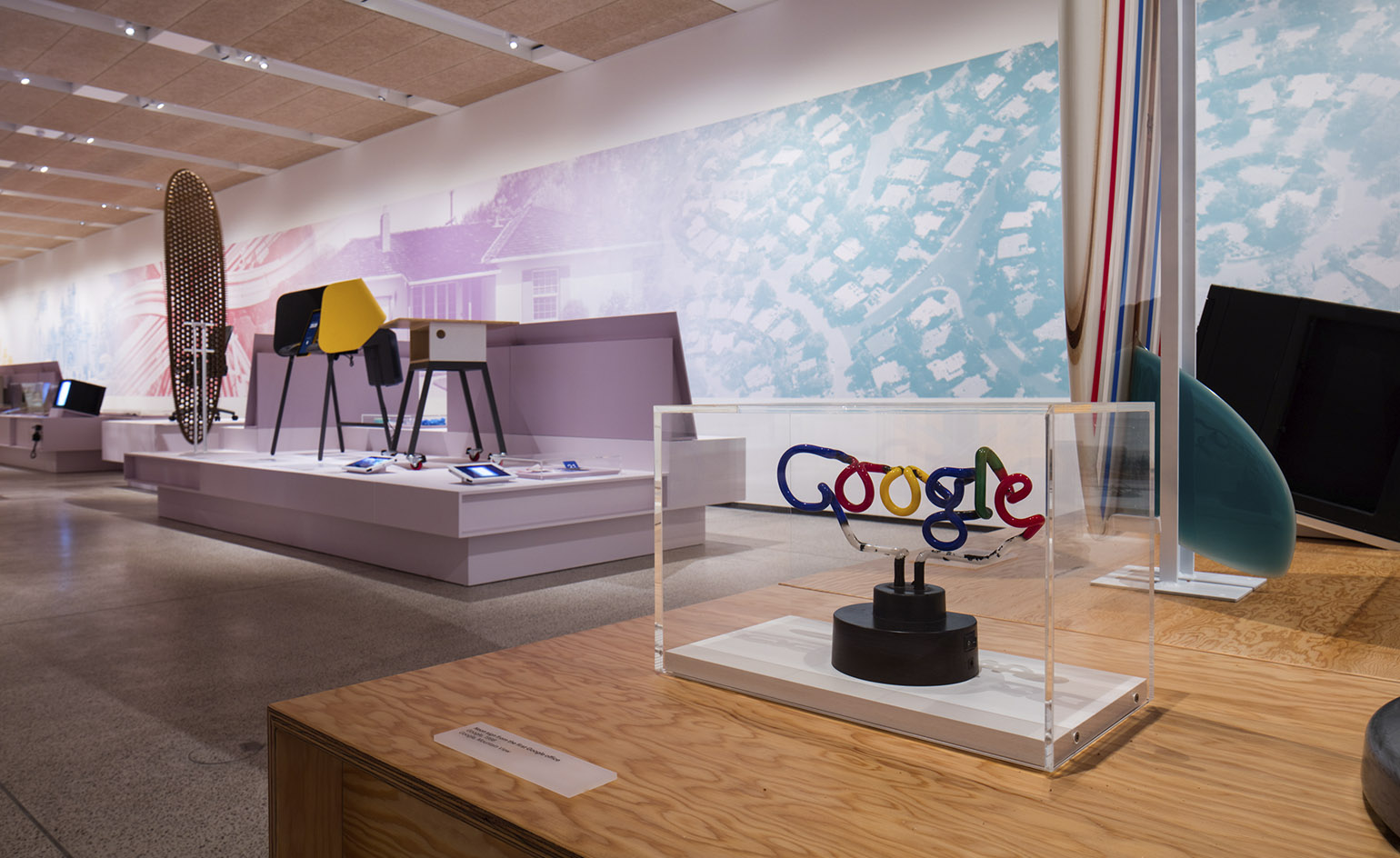
The curators demonstrate how the 1960s counterculture movement in the Golden State has inspired the ethos of major corporations up to today. In foreground, a neon sign from the first Google office in Mountain View, 1998
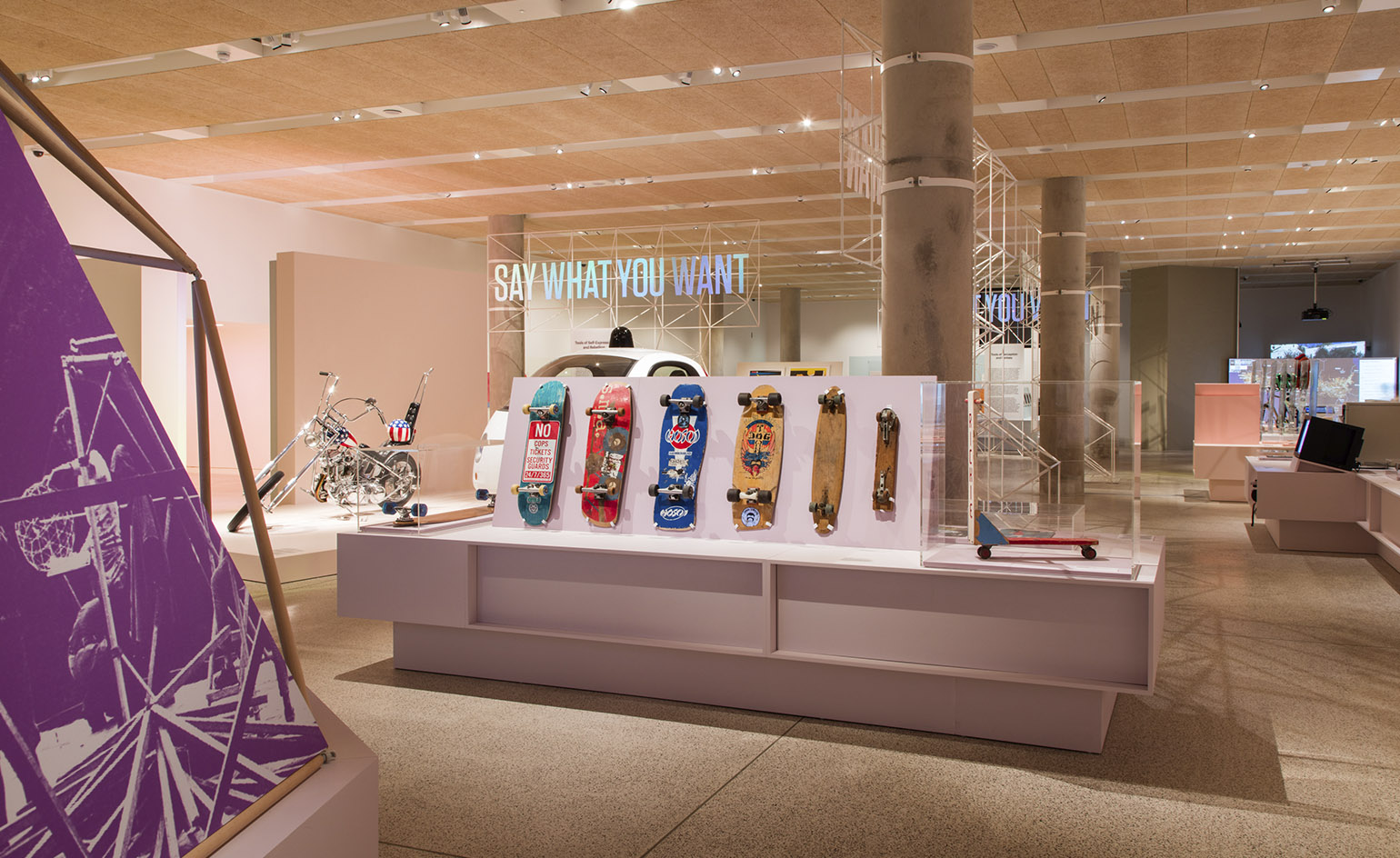
A display shows the evolution of the skateboard deck, from the 1950s through to the noughties
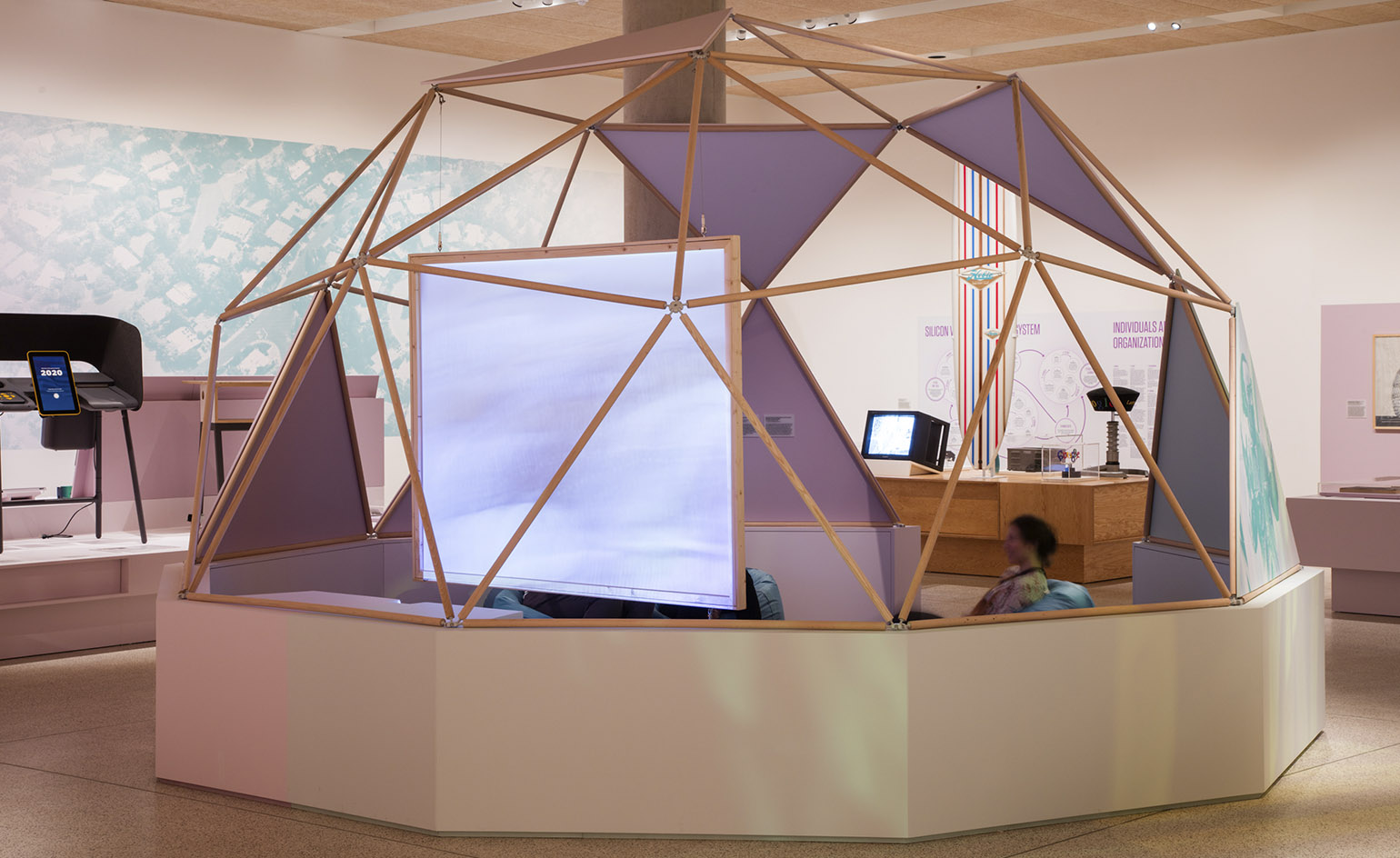
The show is partly made up of a series of Geodesic domes, the lattice-shelled architectural structures favoured by Californian communes in the 1960s and 1970s
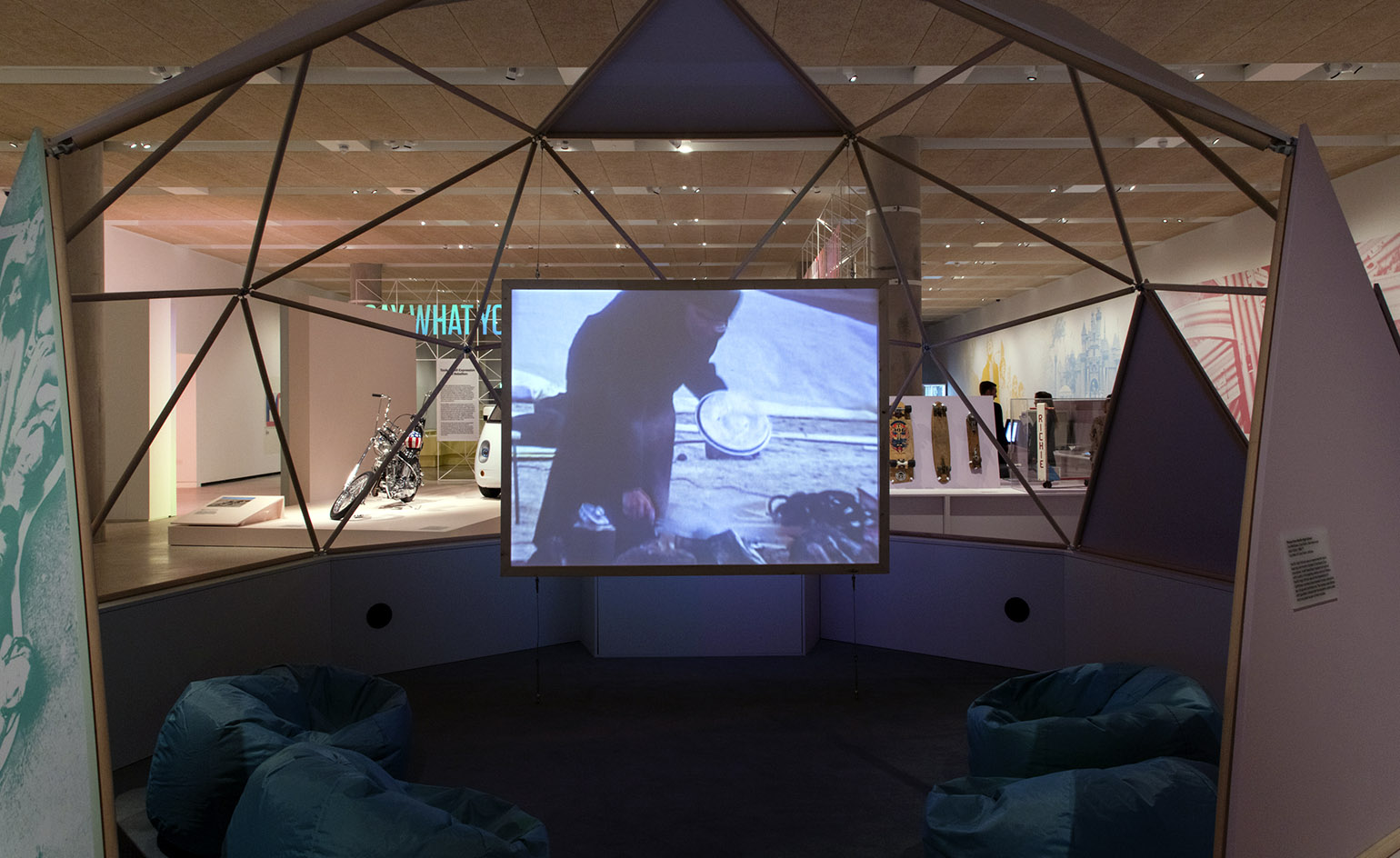
Media collective Environmental Communications’ film series on Los Angeles explores the city’s architectural culture
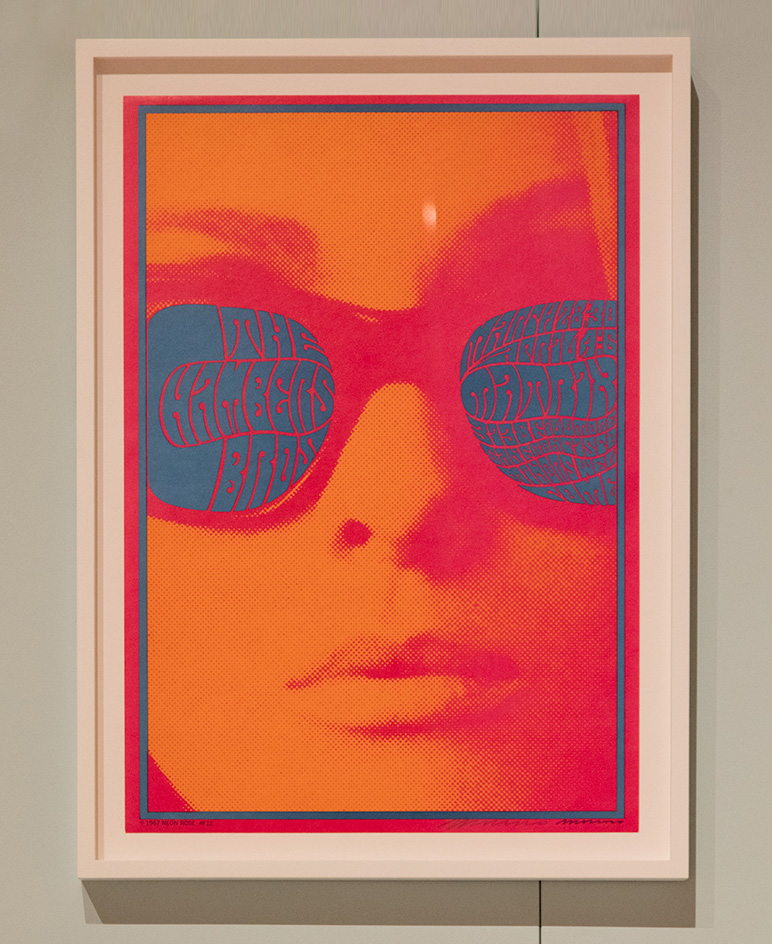
The Chamber Brothers, The Matrix, San Francisco, by Victor Moscoso, 1967
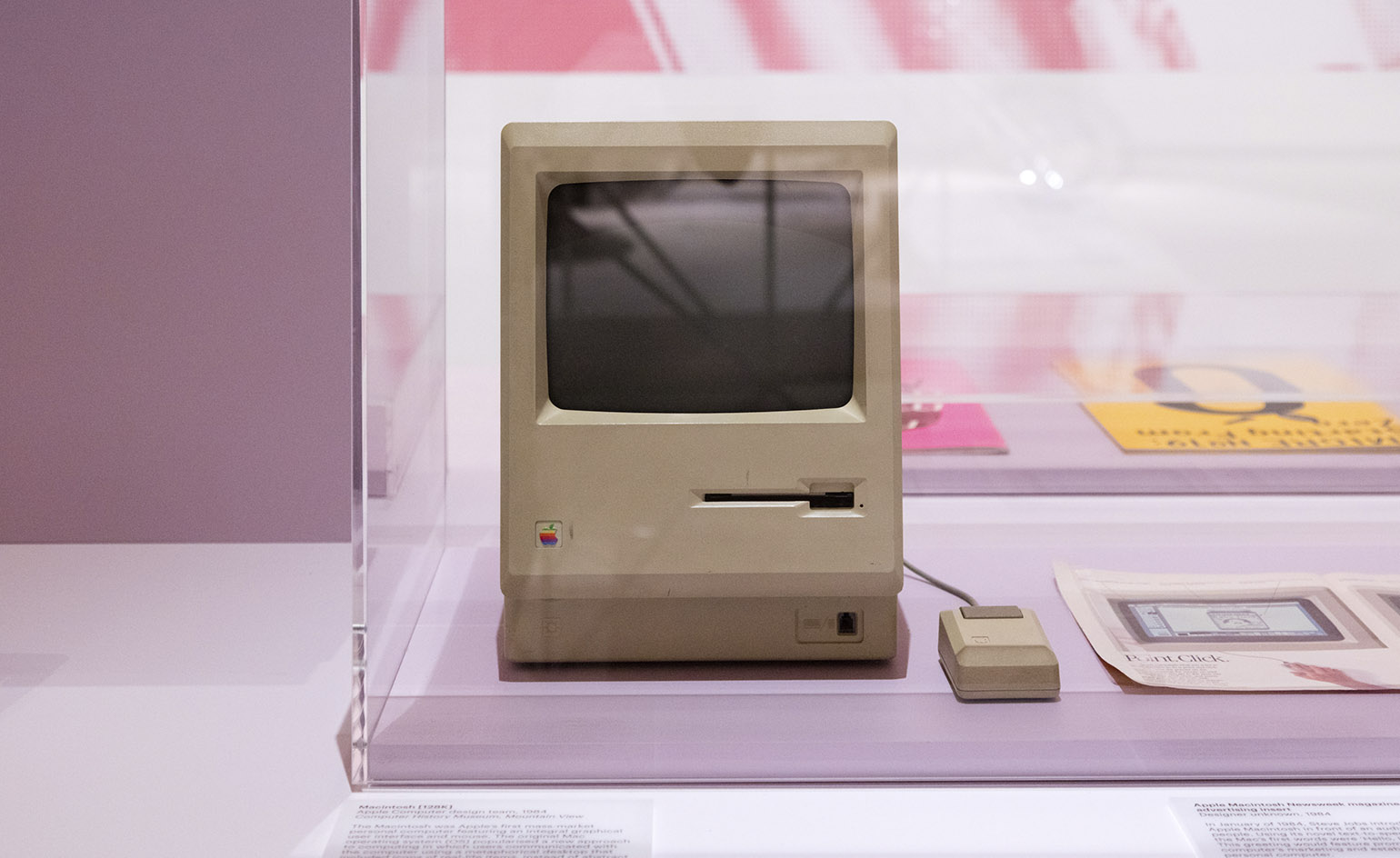
The Macintosh [128K], unveiled by the Apple Computer design team in 1984, was the first mass-market Apple personal computer featuring integral graphical interface and mouse

Through objects, archival publications and documents, the idea that technology can equip the individual with the tools for a self-sufficient life is demonstrated
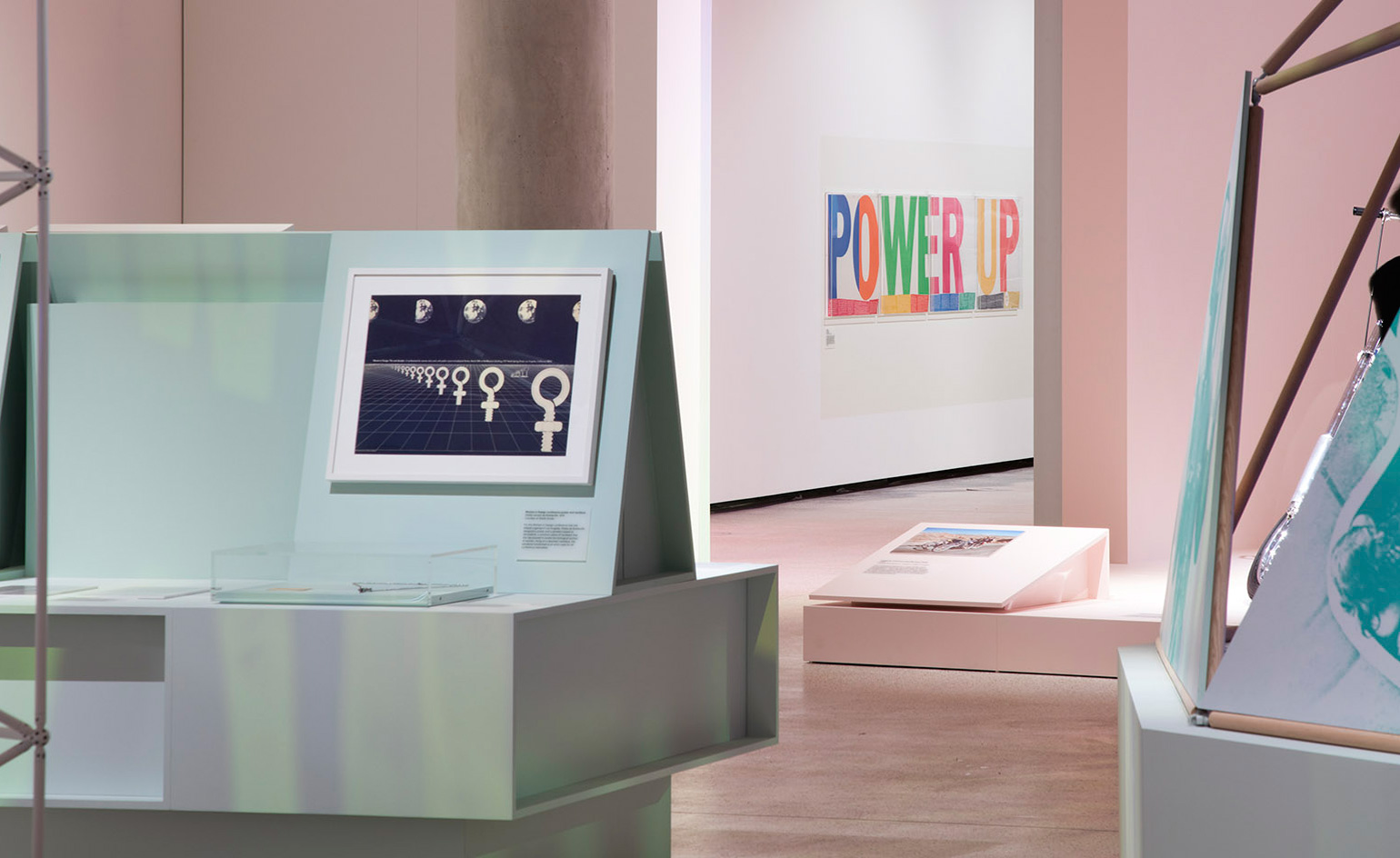
Women in Design conference poster and necklace (foreground), by Shelia Leverant de Betteville,1974; and Power up (background), by Corita Kent, 1965

Emojis were originally invented in the late 1990s by Shigetaka Kurita for Japanese mobile phones, and then made a global language for the Apple iPhone in 2009
INFORMATION
‘California: Designing Freedom’ is on view until 15 October. For more information, visit the Design Museum London website
ADDRESS
Design Museum
224-238 Kensington High Street
London W8 6SG
Receive our daily digest of inspiration, escapism and design stories from around the world direct to your inbox.
Charlotte Jansen is a journalist and the author of two books on photography, Girl on Girl (2017) and Photography Now (2021). She is commissioning editor at Elephant magazine and has written on contemporary art and culture for The Guardian, the Financial Times, ELLE, the British Journal of Photography, Frieze and Artsy. Jansen is also presenter of Dior Talks podcast series, The Female Gaze.
-
 These Kickstarter catastrophes and design duds proved tech wasn’t always the answer in 2025
These Kickstarter catastrophes and design duds proved tech wasn’t always the answer in 2025Odd ideas, Kickstarter catastrophes and other haunted crowd-funders; the creepiest, freakiest and least practical technology ideas of 2025
-
 This floating river cabin in Serbia is a peaceful haven inspired by old shipyards
This floating river cabin in Serbia is a peaceful haven inspired by old shipyardsThis Sava River cabin, a floating design by Aleksandar Stanković, is an intimate home, perfect for leisurely afternoons, cold water swimming and weekend stays
-
 2026 horoscope: design for every star sign
2026 horoscope: design for every star signFor the Wallpaper* 2026 horoscope, we asked Italian astrologist Lumpa what the stars have in store for the year ahead, and what design objects each sign will need to face the new year
-
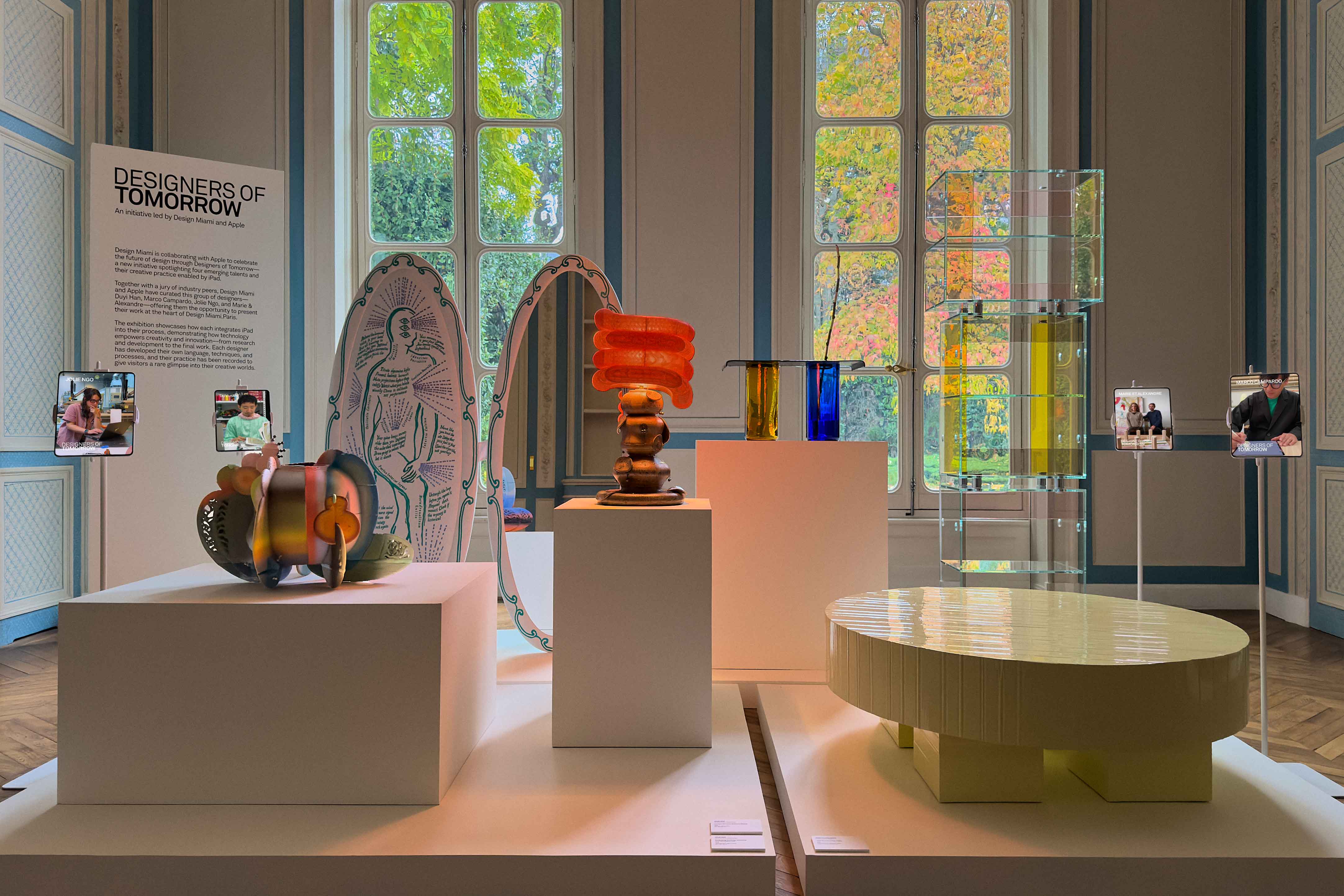 Apple and Design Miami celebrate the new guard of creativity with the inaugural Designers of Tomorrow
Apple and Design Miami celebrate the new guard of creativity with the inaugural Designers of TomorrowApple and Design Miami's Designers of Tomorrow make Paris debut with a cohort of four designers, including Atelier Duyi Han, Jolie Ngo, Marie & Alexandre, and Marco Campardo
-
 Step inside Faye Toogood's intimate cabinet of curiosities at PAD London
Step inside Faye Toogood's intimate cabinet of curiosities at PAD LondonFor PAD London 2025, (until 19 October) Faye Toogood presents The Magpie’s Nest with Friedman Benda
-
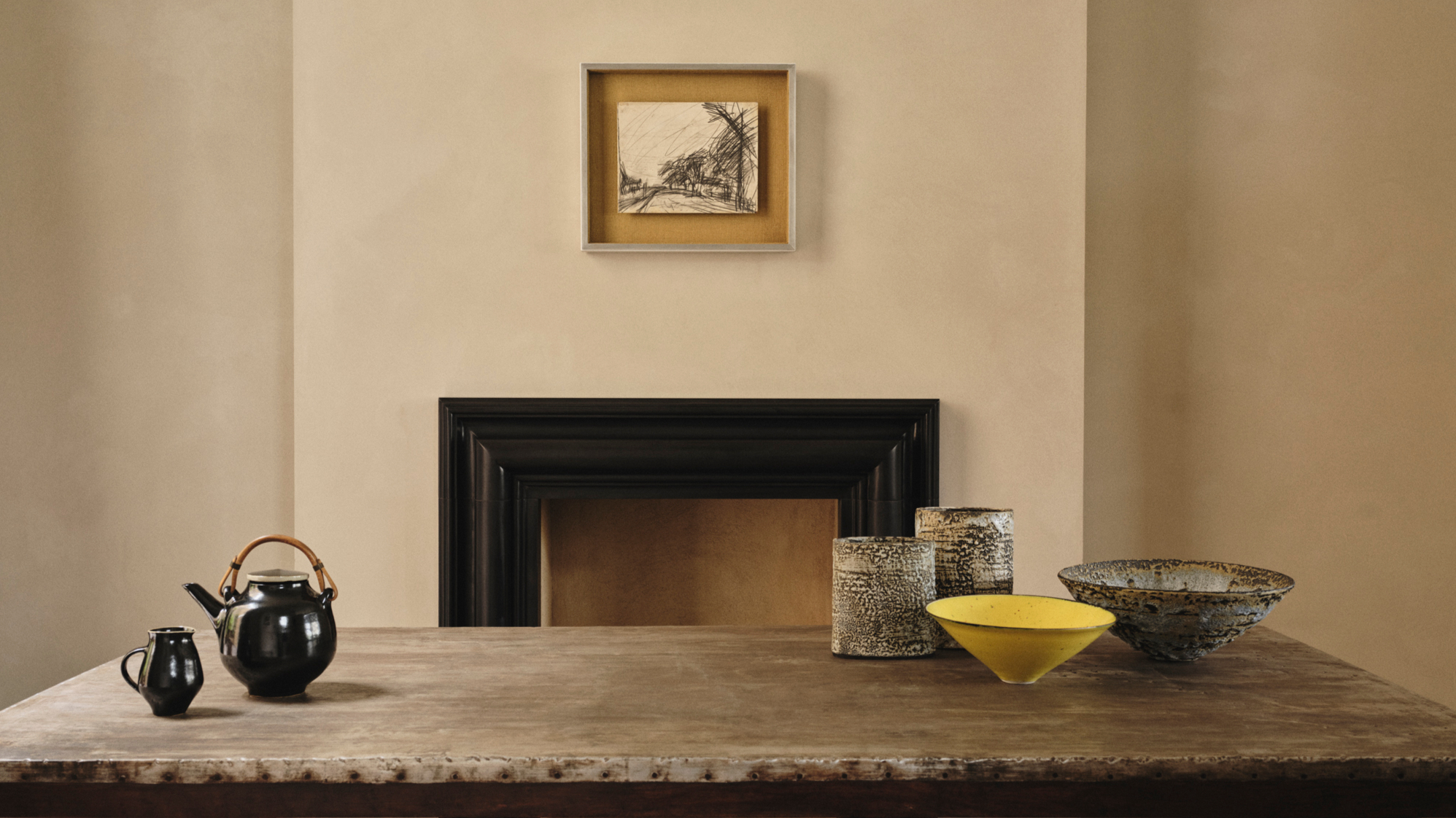 Rajan Bijlani opens his Primrose Hill home for ‘Electric Kiln’
Rajan Bijlani opens his Primrose Hill home for ‘Electric Kiln’In his London home – once the studio of ceramicist Emmanuel Cooper – Rajan Bijlani stages ‘Electric Kiln’, uniting Frank Auerbach, Lucie Rie and Cooper in an intimate reflection on the creative spirit of postwar London
-
 These are the design exhibitions to see in London during Frieze Week
These are the design exhibitions to see in London during Frieze WeekWe round up the best design events happening in London in conjunction with Frieze Week 2025: discover collectible design and craft across the city
-
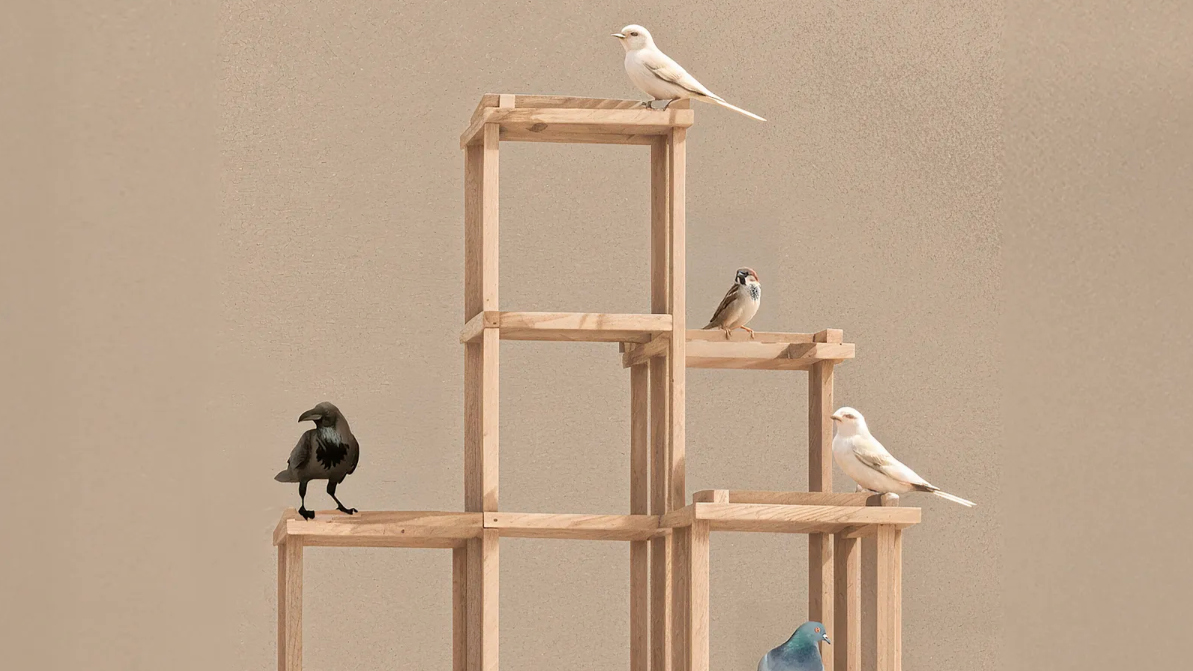 Norman Foster and nine other architects design birdhouses for charity – you can bid
Norman Foster and nine other architects design birdhouses for charity – you can bid‘Architects for the Birds’ is spearheaded by Norman Foster and the Tessa Jowell Foundation to raise funds to improve treatment for brain cancer. Ten architect-designed birdhouses will go up for auction
-
 The David Collins Foundation celebrates creativity in all its forms at London Design Festival
The David Collins Foundation celebrates creativity in all its forms at London Design FestivalThe David Collins Foundation presents ‘Convergence’ at the Lavery during London Design Festival 2025 (on view until 19 September), featuring works from the Arts Foundation’s annual Futures Awards
-
 Lee Broom’s brutalist-inspired ‘Beacon’ will light up London as Big Ben strikes the hour
Lee Broom’s brutalist-inspired ‘Beacon’ will light up London as Big Ben strikes the hourSet to pulse through London Design Festival 2025 (13-22 September) and beyond, the British industrial designer’s sculptural light installation on the South Bank draws on its surroundings
-
 Yuri Suzuki turns sound into architecture at Camden Arts Projects
Yuri Suzuki turns sound into architecture at Camden Arts ProjectsThe sound designer unveils ‘Utooto’, an interactive installation at London’s Camden Arts Projects (until 5 October 2025), in which visitors collaboratively build a sonic piece of architecture